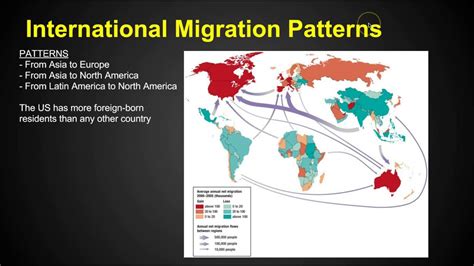Defining Forced Migration
Forced migration refers to the involuntary movement of people from their homes due to external factors beyond their control. It is a serious human rights issue that affects millions of people worldwide. AP Human Geography recognizes forced migration as a complex phenomenon with significant social, economic, and political implications.

Types of Forced Migration
There are various types of forced migration, including:
- Refugees: Individuals who flee their country due to a well-founded fear of persecution based on race, religion, nationality, political opinion, or membership in a particular social group.
- Internally Displaced Persons (IDPs): Individuals who are forced to leave their homes but remain within the borders of their own country.
- Asylum Seekers: Individuals who apply for refugee status in another country but have not yet received a final decision on their application.
- Trafficked Persons: Individuals who are coerced or deceived into moving from one place to another for the purpose of exploitation.
Causes of Forced Migration
Forced migration is caused by a multitude of factors, including:
- Conflict and Violence: Wars, civil unrest, and persecution can force people to flee their homes.
- Natural Disasters: Earthquakes, floods, droughts, and other environmental disasters can displace large populations.
- Economic Factors: Poverty, unemployment, and lack of opportunity can drive people to seek refuge in other countries.
- Political Repression: Authoritarian regimes may force people to leave their homes due to political dissent or human rights violations.
Consequences of Forced Migration
Forced migration has severe consequences for individuals and communities, including:
- Loss of Home and Belongings: Displacement uproots people from their families, communities, and cultural traditions.
- Trauma and Psychological Distress: Migrants often experience trauma, anxiety, and depression as a result of their displacement.
- Economic Hardships: Migrants often face challenges finding employment and accessing basic services in their new locations.
- Social Stigma: Migrants may face discrimination and prejudice in their host communities.
Global Trends in Forced Migration
According to the United Nations High Commissioner for Refugees (UNHCR), there were an estimated 26.3 million refugees worldwide in 2021. Additionally, there were an estimated 53.2 million internally displaced persons (IDPs) and 10 million stateless individuals.
The majority of forced migration occurs in developing countries. In 2021, the top five countries of origin for refugees were Syria, Afghanistan, South Sudan, Myanmar, and the Democratic Republic of Congo.
AP Human Geography Framework
AP Human Geography examines forced migration within the following units:
- Population: Causes and consequences of forced migration, including displacement, refugee flows, and the role of international organizations.
- Political Geography: The relationship between forced migration and political boundaries, conflict, and peacebuilding.
- Economic Geography: The economic impact of forced migration on host communities and the challenges faced by migrants in accessing employment and services.
Addressing Forced Migration
Addressing forced migration requires a multi-faceted approach, including:
- Conflict Resolution: Prevention and resolution of conflicts that displace people.
- Humanitarian Aid: Providing food, shelter, and other essential services to migrants.
- Resettlement and Integration: Assisting migrants in finding permanent homes and integrating into their new communities.
- Advocacy: Raising awareness about forced migration and advocating for the rights of migrants.
Conclusion
Forced migration is a pressing human rights issue that affects the lives of millions worldwide. AP Human Geography acknowledges the complex causes and consequences of forced migration, providing students with a comprehensive understanding of this global phenomenon. By examining forced migration through the lens of different themes and case studies, students gain insights into the challenges and opportunities facing migrants and develop critical thinking skills necessary for addressing this issue effectively.
